The Specialized S-Works Tire Factory in Lage, Germany, is more lab than industrial process, it's function is to design the next generation of mountain bike tyres... I went along to find out how
“It’s like the meth lab from Breaking Bad meets Ready Steady Cook.” The comparison has pops out of my mouth before I really have time to think about it. “Can I really say that?” I quickly ask Sam Benedict from Specialized, the man showing us round the Specialized’s new top-secret tyre lab in Germany.
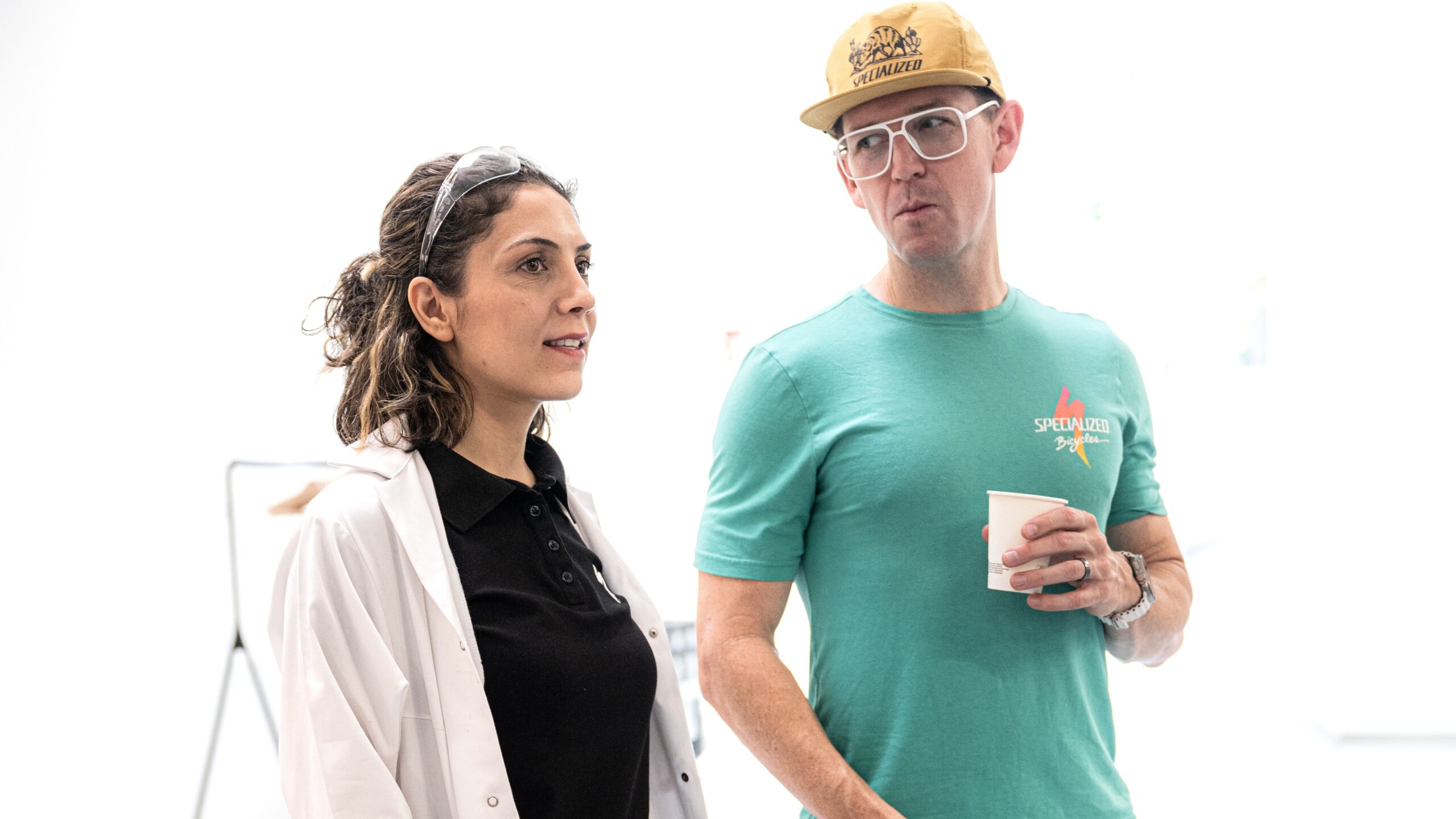
chemist Nese Kaynak and Spesh top brass Sam Benedict talk grip, at the Specialized S-Works Tire Factory
“I think you just did,” he says with a grin. He doesn’t seem offended, quite the reverse, enjoying the reactions of a handful of journalists to the new Specialized S-Works Tire Factory in Lage, near Hannover. We’re the first people outside Specialized to see the facility, and learn about just how it plans to make the best bike tyres in the world.
It’s not the tyre factory of my imagination, which is deafeningly loud, tropically hot, and features row upon row of giant machines that stretch to the horizon. This is more like the kind of nondescript modern office block you’d find in any city.
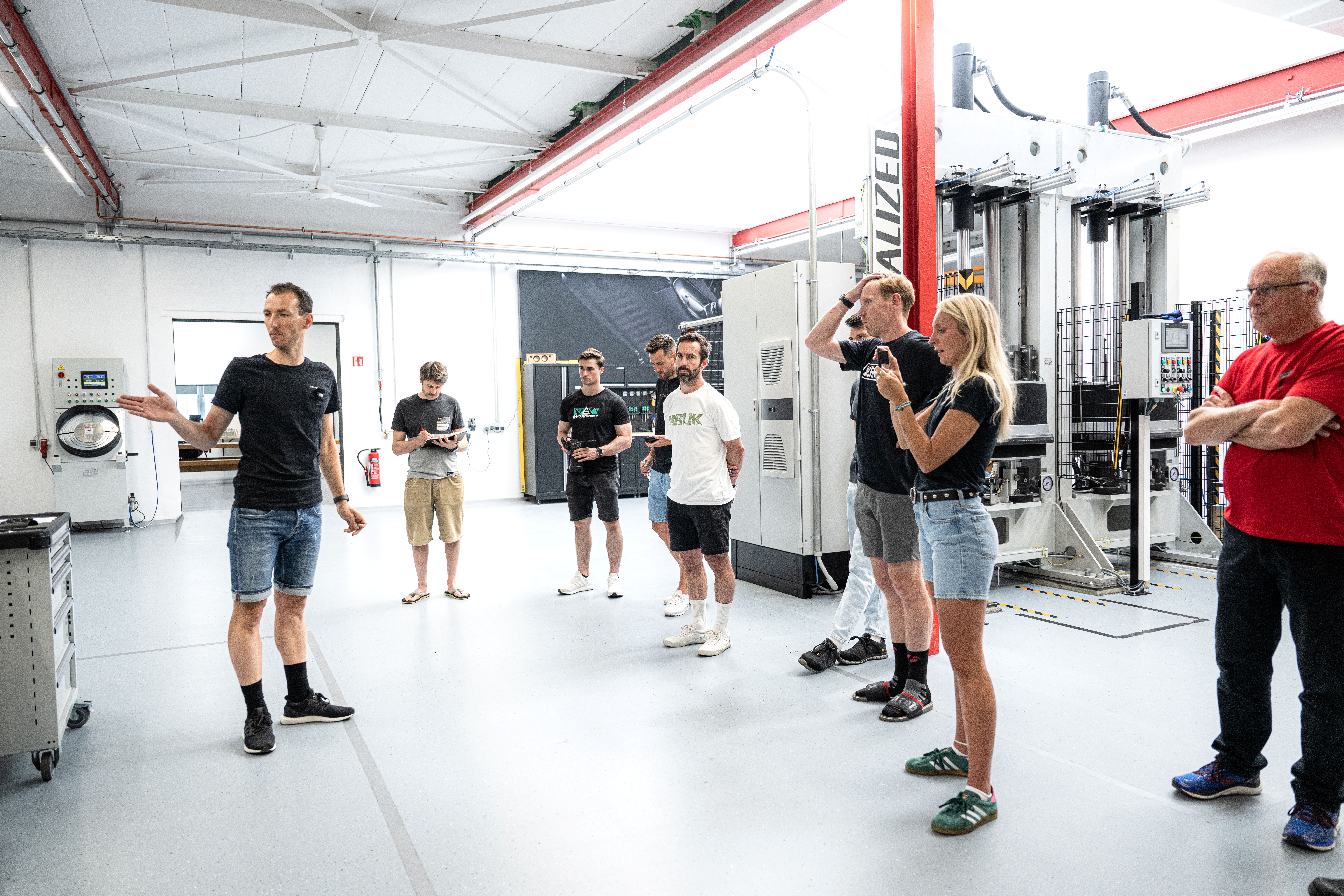
It’s called a factory, but lab would be more appropriate given the scientific testing going on here
The walls, floors and ceiling are painted a crisp white, while scientists in lab coats and elbow length gloves crouch round screens and mix, cut and bake fantastically titled materials like antiozonant, zinc oxide and stearic acid, whose names mean nothing to me.
Outside the temperature is nudging 40 degrees, as Europe suffers its third heatwave of the summer, but inside the faint hiss of air conditioning isolates us. The factory is cool, mostly quiet, with an almost imperceptible smell of rubber and something else faintly acrid.
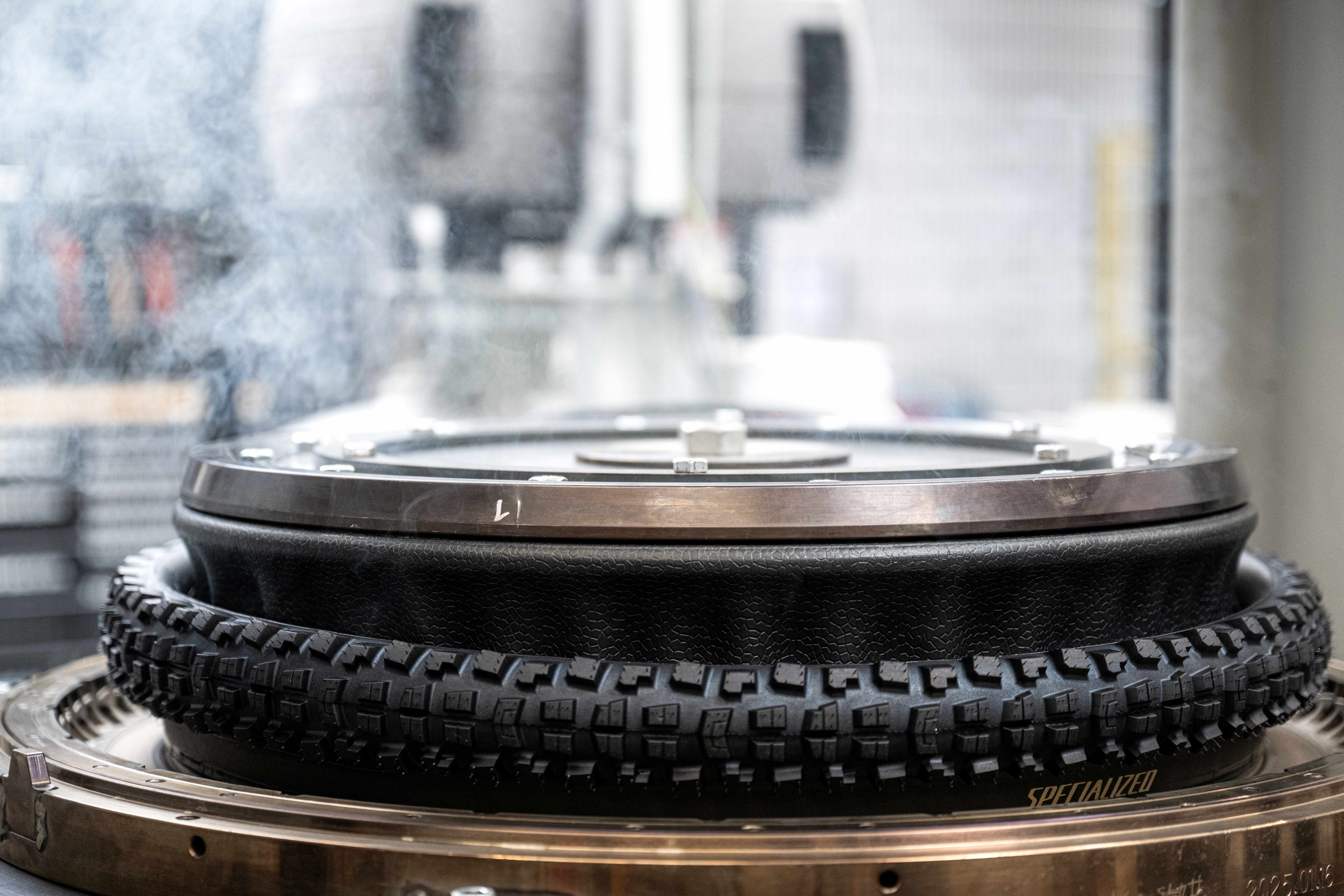
My tyre is born, after 10 minutes of cooking at 170 degrees
With a blast of steam and heat the giant tyre press I’ve been staring at for the past 10 minutes opens, revealing a piping hot tyre I’ve spent the morning helping to make. It’s too hot to handle without the gloves I’m wearing, I pull it away from the teeth of the metal mould that form the lugs, and drape it to dry like spaghetti.
My new Cannibal is somehow shinier and brighter than the boxed versions I’ve seen before, and smells comfortingly familiar. It’s the same smell you get when unfolding a new tyre and popping it onto the rim, only much stronger.

Continental makes its high end tyres in Germany, but that’s pretty uniqe
Where are mountain bike tyres from?
Almost all mountain bike tyres are made in the Far East and Asia. Maxxis lists Taiwan, China, Thailand, Vietnam, and India as its manufacturing hubs, while Specialized itself uses factories in Taiwan and China, Vietnam and Thailand. Conti does put together its high end premium tyres in Korbach in Germany, but it really is the exception.
Specialized isn’t trying to replicate the Conti model though, the S-Works factory is nowhere near big enough for that, producing at most some 10,000 tyres a year.
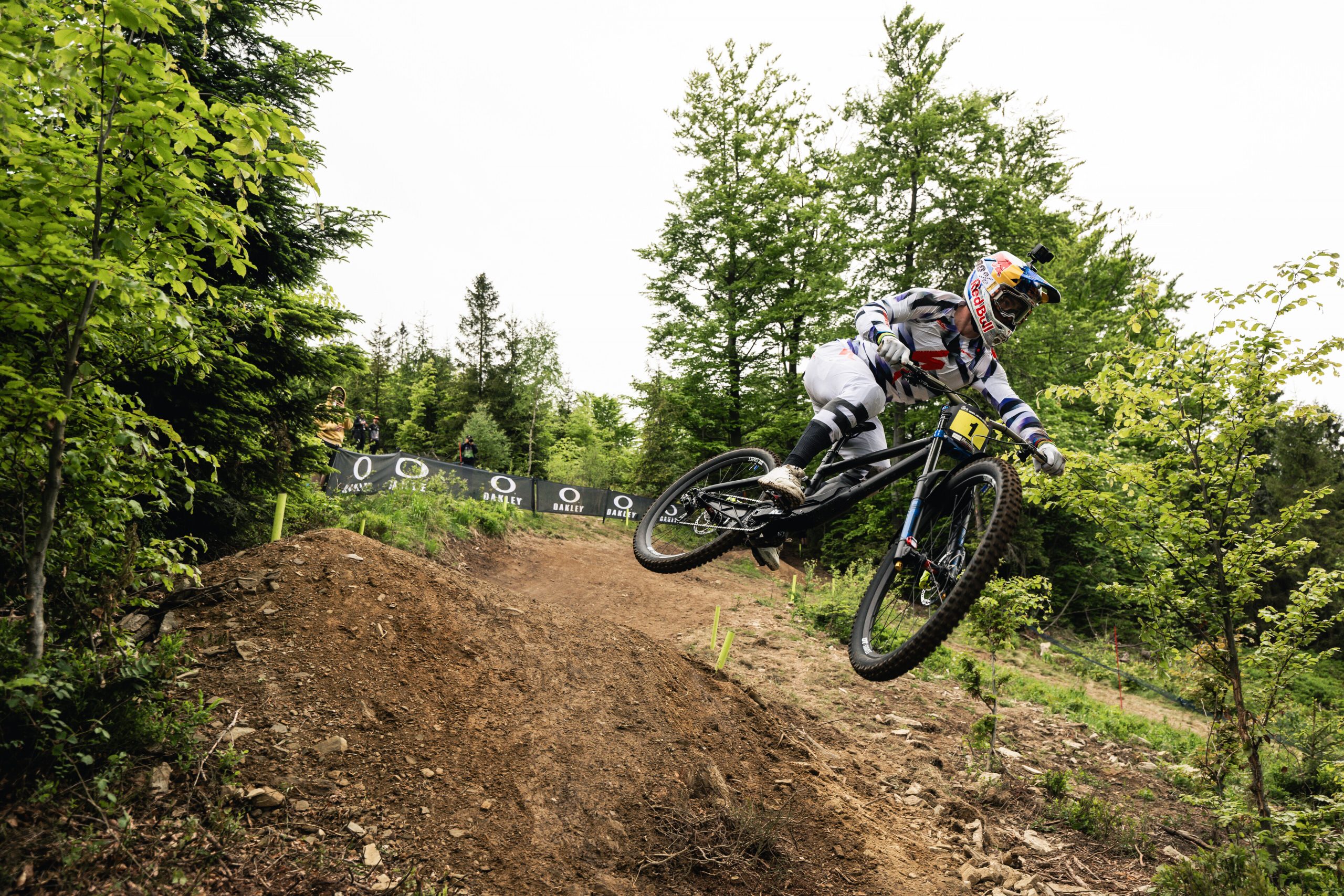
Loic Bruni performs at UCI DH World Cup in Bielsko-Biala, Poland on May 19, 2024 // Bartek Wolinski / Red Bull Content Pool // SI202405190764 // Usage for editorial use only //
“Road tyres are super fast [to make] but the gravity tyres take way longer, we can make 2015 big ones a day,” Christian Plümacher told me, one of the two machine operators here. In comparison Maxxis is rumoured to bake some 50 million bike tyres a year.
This place is about something else then. The Cannibal tyres Loic Bruni rode to victory at Pal Arinsal last month were put together here. At Lage it’s about quality over quantity, building tyres for the Specialized team riders and introducing a level of quality control that simply can’t be matched at a bigger facility thousands of miles away.
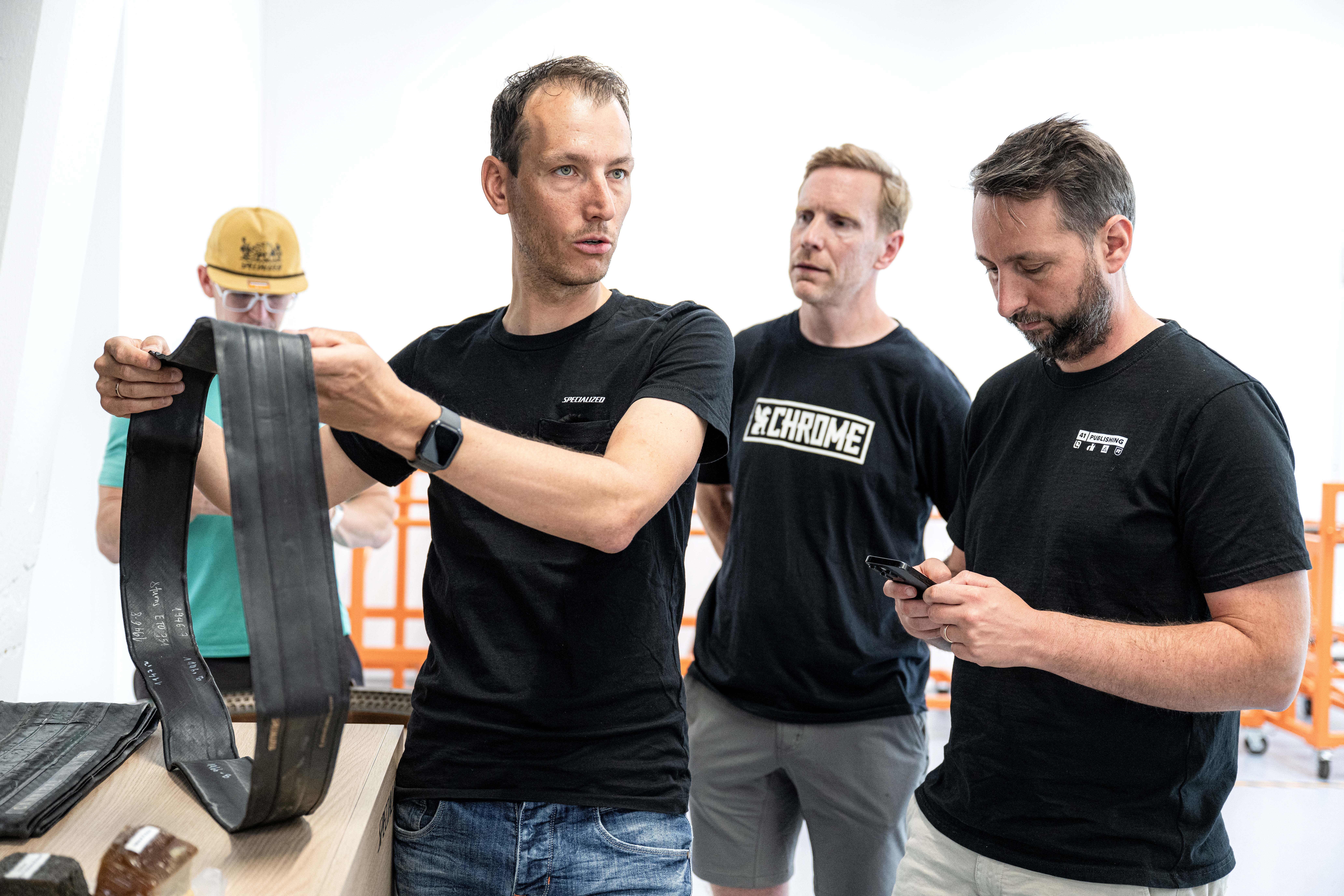
Rüdiger Schulte lofts a newly laid up tyre, missing the lugs of course
It also makes changes quicker to implement too, according to Rüdiger Schulte, the principal engineer in Lage, who tells me tweaks to things like the compound are possible here, even between race weekends.
“At mass production in big factories they have a hall full of the curing machines, they’re heated with hot steam that runs into pipe lines in the machines,” Rüdiger says. “This temperature and the pressure is not adjustable, all you can play with is the curing time.
“But ours is heated with electricity so it’s fully controllable,” he says. “And we have compressed air to add flexibility. We are not constrained so we can design the whole process and adjust for the best product.”
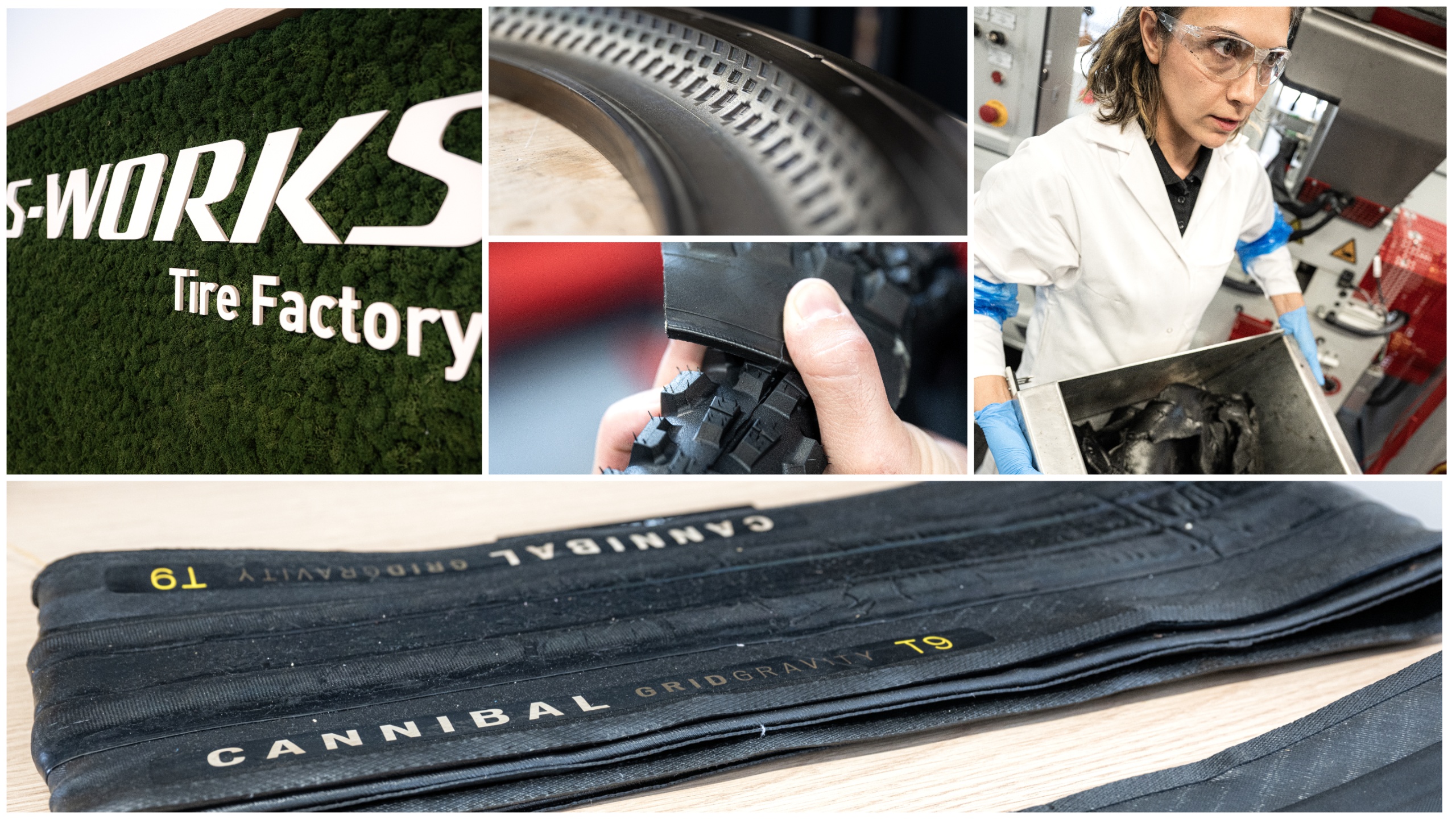
The S-Works factory makes Cannical tyres for the pros
This means Specialized can test everything, from tyre carcass and sidewall protection, lug shape and pattern, to compound material, in a fraction of the time and expense it would take a big factory to do the same. Specialized also doesn’t have its own tyre factories at its beck and call to do this kind of work, instead outsourcing the bulk of its production to third parties.
And this kind of tyre technology advance also makes its way to you and me. We might not be going quite as fast as Bruni or Blevins, but fundamentally we want the same things – more grip, better puncture protection and less rolling resistance.
“There’s a lot of effort that goes into making a tyre, Rüdiger says. “From making the compound, analysing the compound, getting the casing right, correctly aligning it and cutting, then assembling the whole tyre on the building machine.”
That’s a lot of levers to pull if you’re trying to optimise for better grip on the trail. Tyres grip the ground in two different ways, adhesion is the stickiness of the compound, while hysteresis is the process where lugs or knobs deform and mechanically grab onto the trail surface.
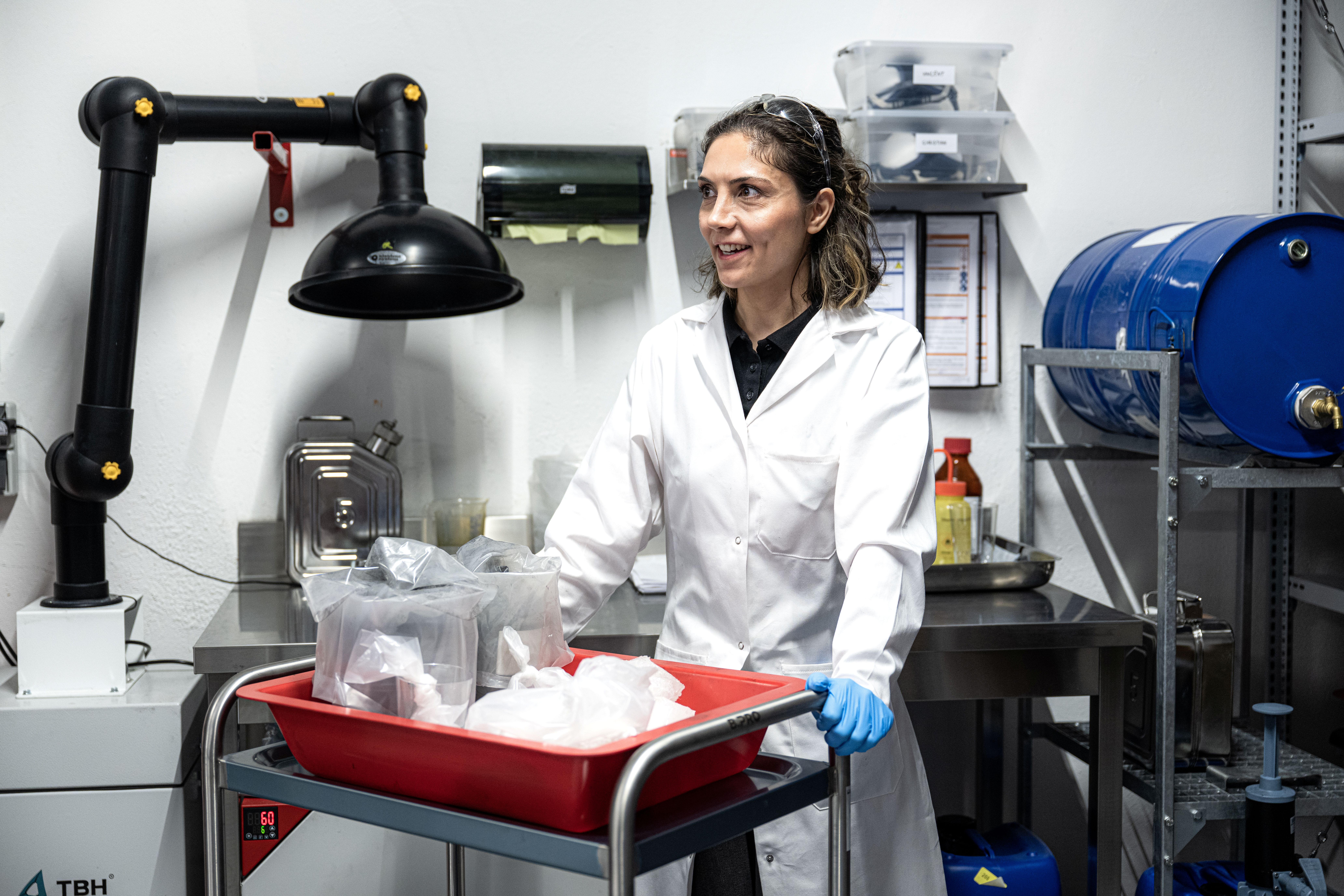
Nese Kaynak worked in the car industry before bringing her expertise to two wheels
How to make a tyre
The process begins at the S-Works lab with Nese Kaynak, she’s a material chemist who spends her days mixing up experimental rubber compounds to test on the tyres like the Cannibal or Butcher.
“I’m designing the recipe, and using the computer to follow the trial, because we have many recipes and that makes it impossible to remember the recipe details,” she says, before adding a shopping list full of ingredients to what looks like a giant cake mixer.
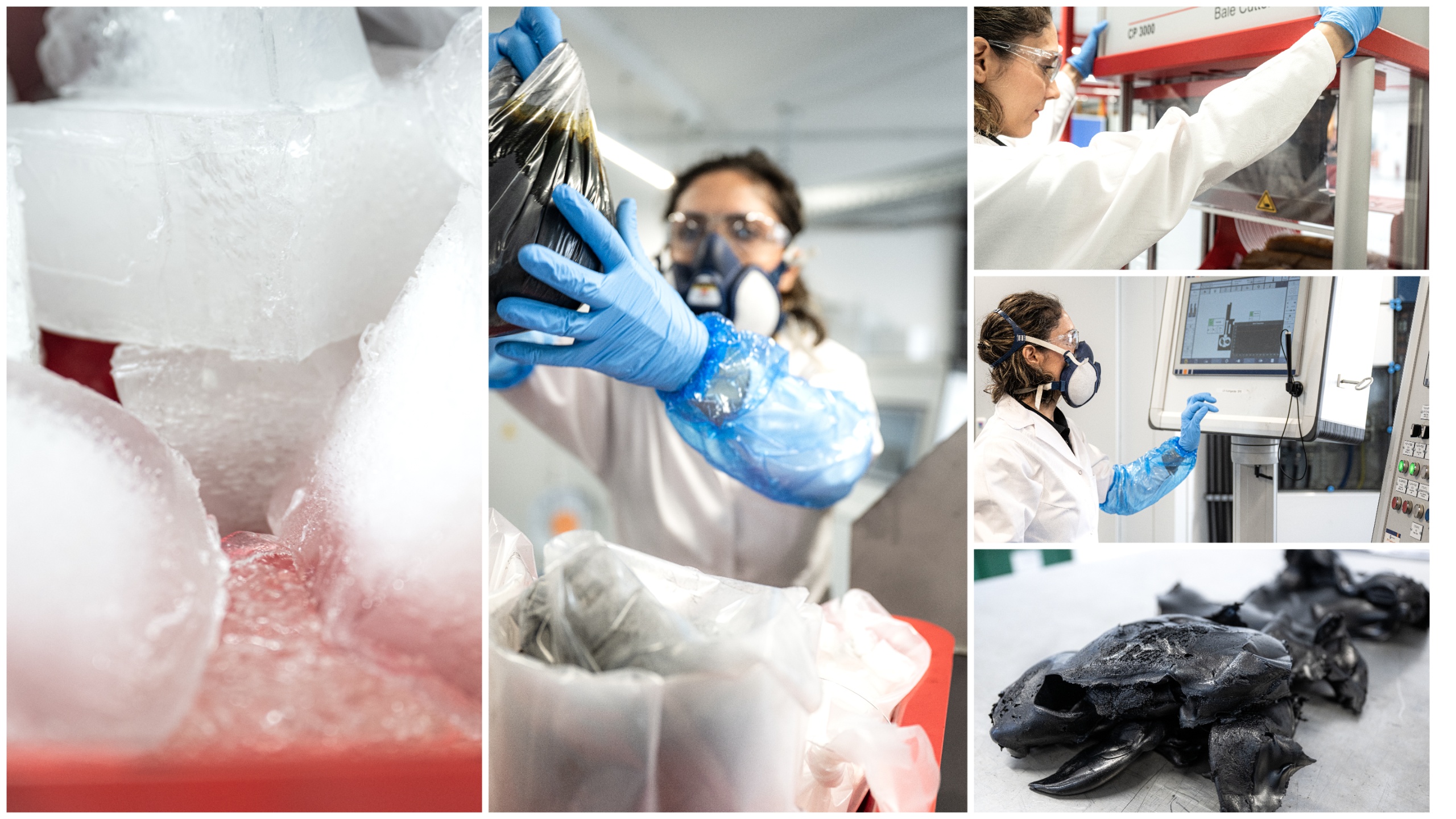
Mixing the tyre ingredients together to produce and analyse a new compound
I recognise the synthetic rubber we walked past on the way in, now being packed into the hopper, alongside, oils, carbon black, silica and a whole host of substances I quickly lose track of. Nese hits a series of buttons on her control panel and the machine mixes the lot, before spitting it out as big sheets of black rubber. It reminds me of a pastry chef at work, as she feeds the tacky looking sheets twice through the dough roller.
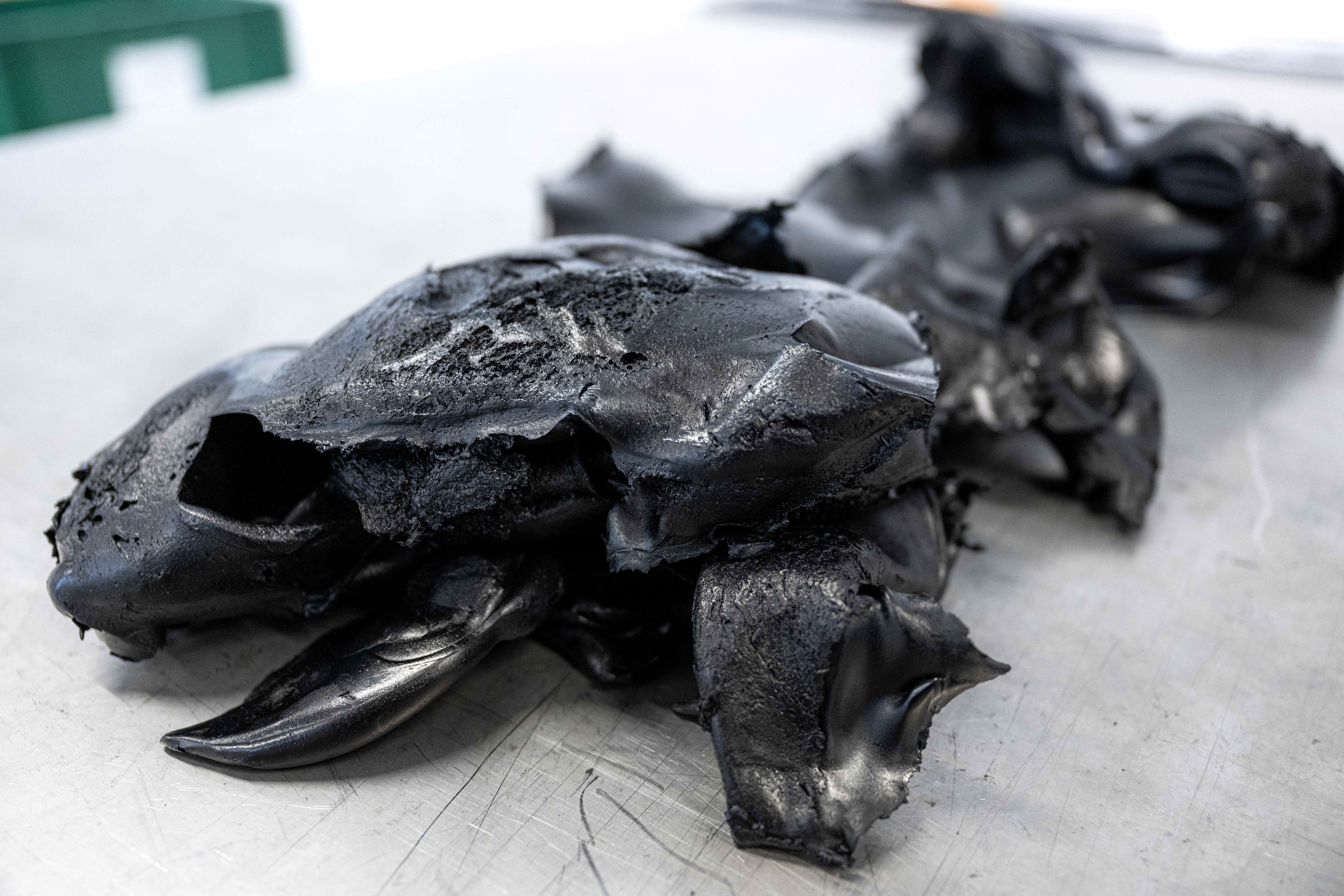
Tyre compound in its pre-shaped form, before being extruded and laid up onto a new carcass
Next the raw product is extruded and preshaped, before being scanned to make sure it’s within the right tolerances – 0.3mm on thickness or 2mm wide. “The priority is high quality, small batch tyres, so the machines need to be flexible and quick,” explains Jorge Mendes, who manages the S-Works Tyre Factory. “Our team generates many ideas, and the factory allows us to bring them to life with virtually no limitations.’”
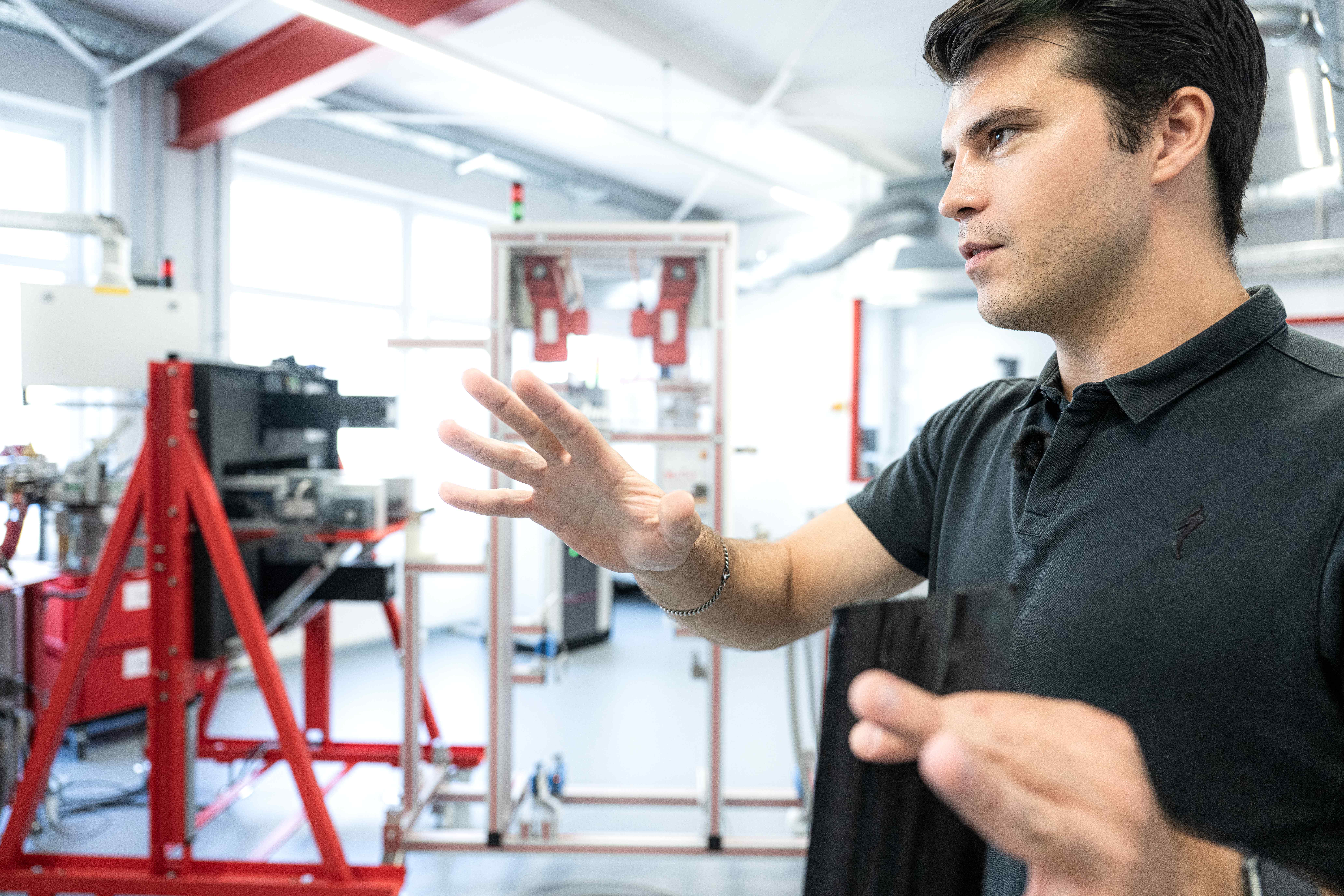
Jorge Mendes runs the S-Works Tyre Factory S-Works Tire Factory
The preshaped rubber sheets are fed into another hopper, before a comically long conveyor belt takes them slowly through pipes, under rollers, through a sensor, onto bobbins and out the other side. I reach out a touch one piece and it’s hot, but not enough to burn, and has the consistency of chewed bubble gum.
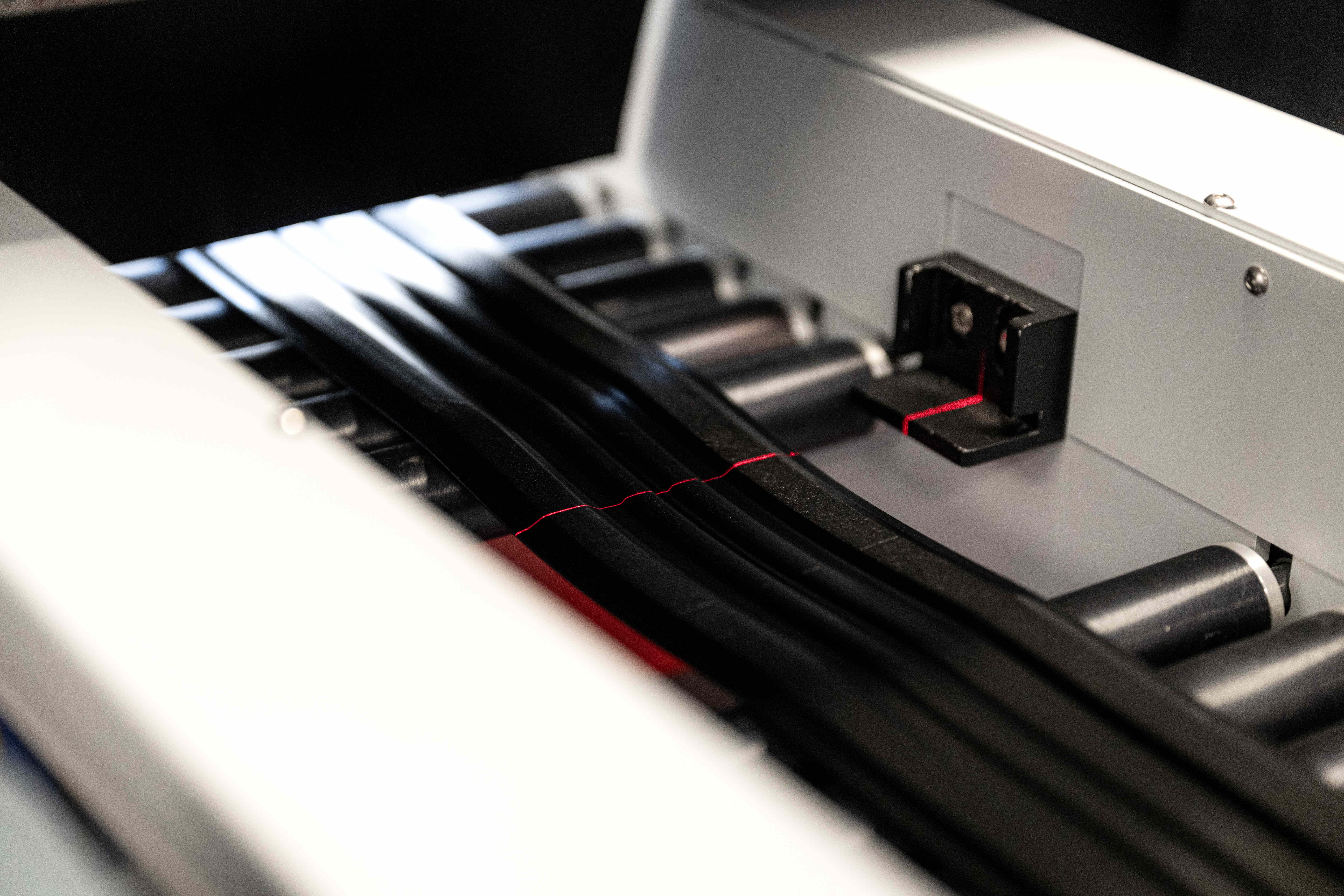
This machine measures the extruded rubber to ensure its within tight tolerances
That’s the chemical part done, the rubber moves into the next room to be physically made up into a tyre. The process starts on a vast cutting board, where a scary looking saw slices the casing textile ply to the correct size. We’re used to seeing tyres coming up a few inches wide, but laid out flat the footprint is probably double.
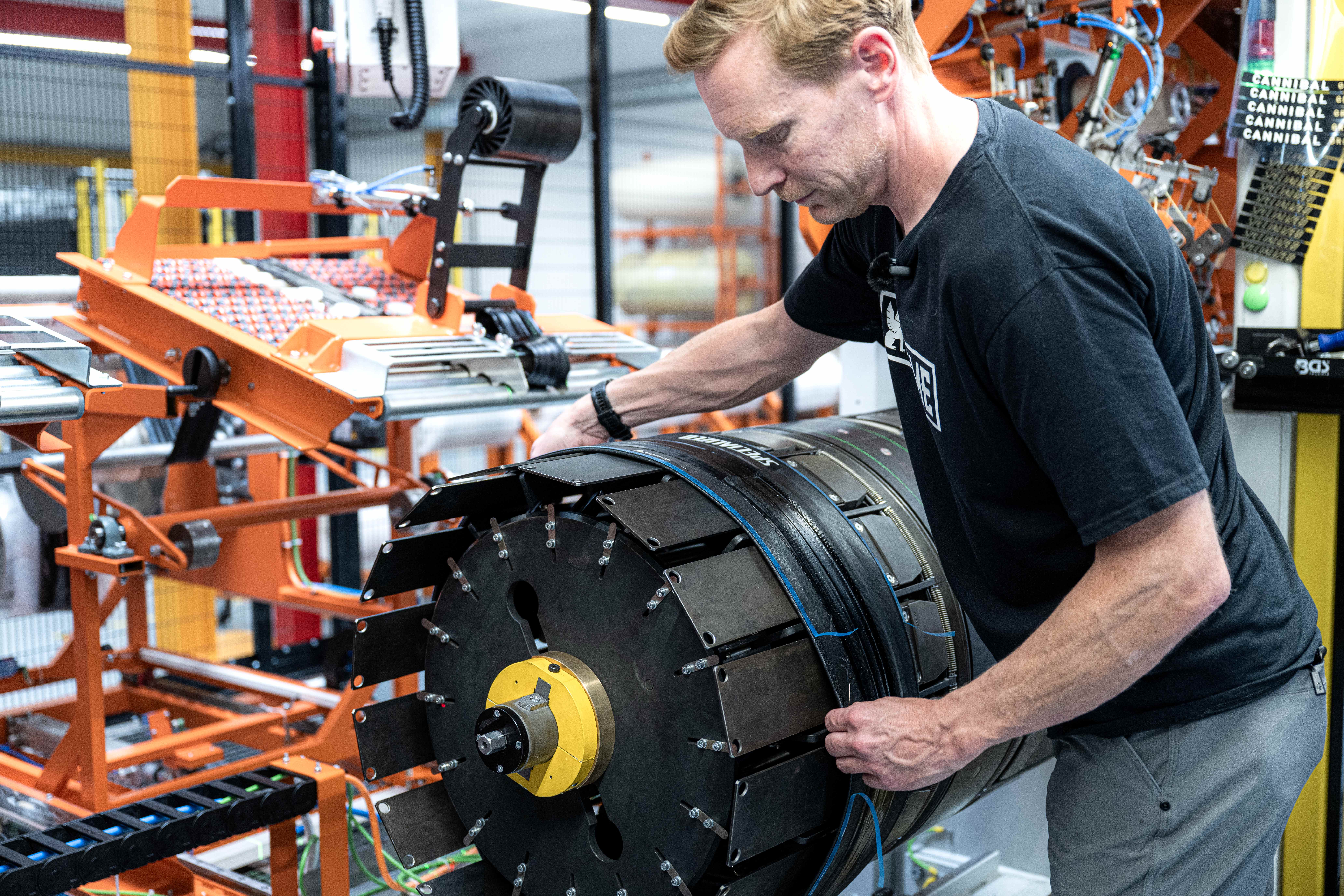
Me, making a hash of laying up a new tyre – I’m adding the beading here
Finally, it’s my turn. With the help of Christian Plümacher I lay out the rubber onto a huge drum, which rotates and joins each end together. I feel like Richard Ayoade in Travel Man as I cackhandedly line up the aramid beads running the length of each tyre, apply the stickers I want bonded to my tyre, and pull the whole flat carcass off the machine.
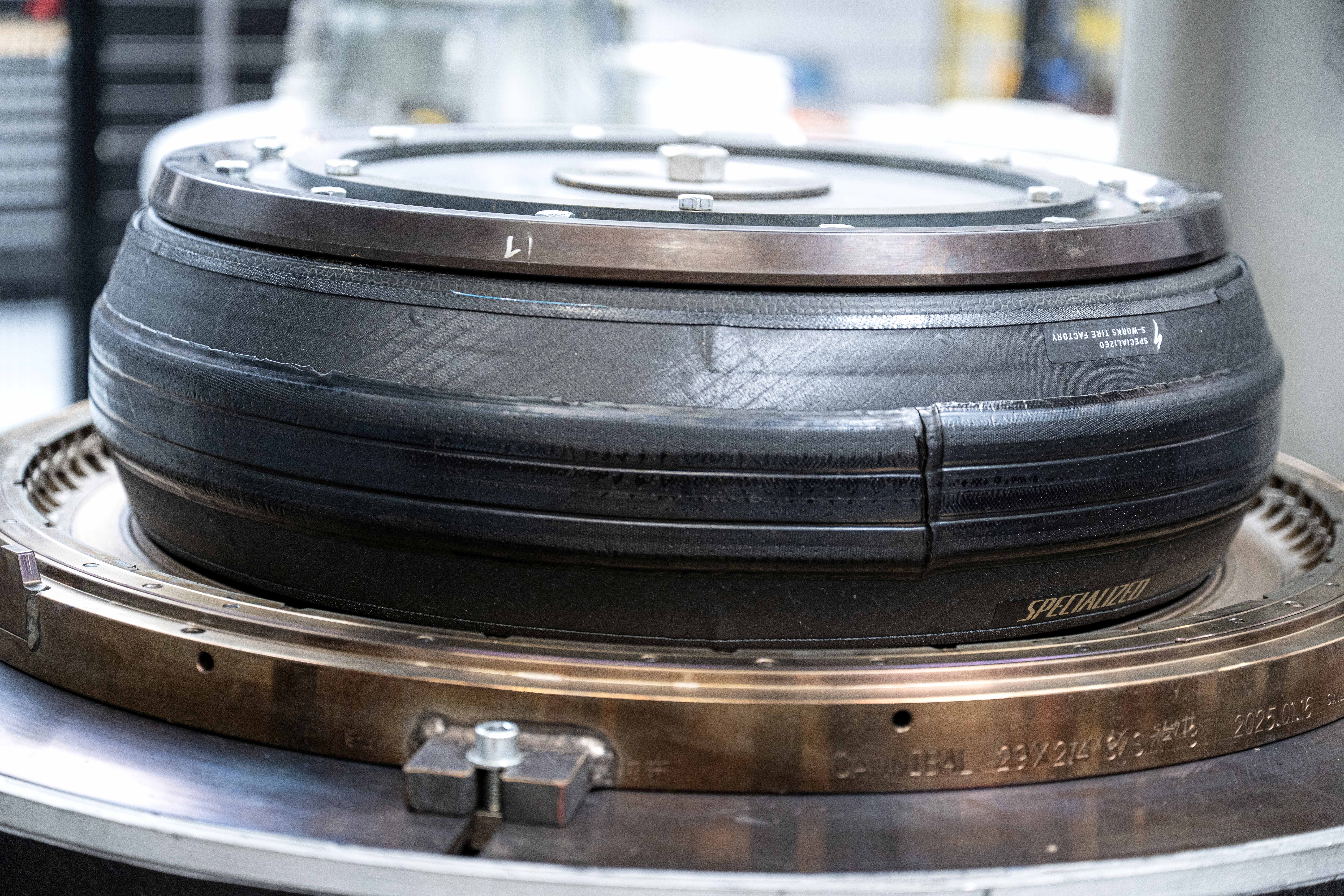
My oven- ready Cannibal
“The final step is the vulcanisation, or curing, it’s like getting the cake out of the oven,” engineer Rüdiger says, as we load the carcass into the final press, which will raise the lugs and deliver the finished tyre.
“It’s heat and pressure and time doing the work,” he says. “You press the tyre into the tooling for the final shape, the lugs and the engraving on the tyre.”
I walk away from the press like a kid at Christmas, clutching my new tyre tightly to my chest. I’ve received hundreds of tyres in my two decades as a mountain bike journalist, but none has thrilled me quite like this one. I also feel privileged to have been able to do this, and while most people won’t get the chance, I’m hoping they can benefit from what Specialized is doing here in Lage.

And the fininshed article




